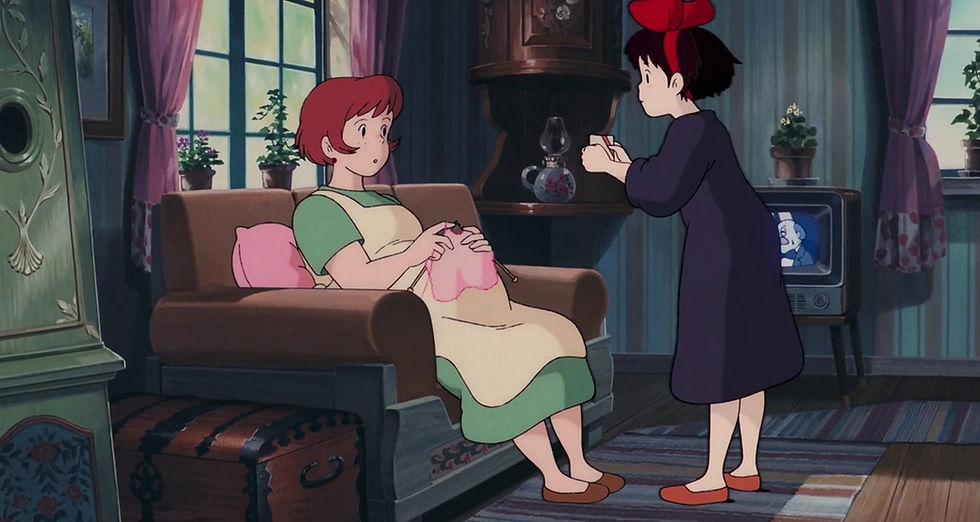How to Talk About Anime with Kids (Without Watching Every Episode Yourself)
- The Weebersons

- Jul 12
- 3 min read
Updated: Jul 14
You don’t have to screen every episode to stay connected. Here’s how to guide with questions, not control.

Introduction
You care about what your kids watch—but you don’t always have time to preview every show. The good news? You don’t have to. With the right questions, you can turn anime into meaningful conversation, even if you’re not watching it yourself. This post gives you tools to stay connected, build trust, and help your kids think more deeply about the stories they love.
Why It Matters
Anime often deals with big emotions—grief, identity, friendship, loyalty—wrapped in fantasy or humor. That’s part of what makes it compelling for kids and teens. But without space to reflect, those messages can go unnoticed or be misunderstood. By guiding with questions instead of control, you’re not just filtering content—you’re helping your kids grow as viewers and thinkers.
1. Lead with Curiosity, Not Control
Kids are more open when they don’t feel interrogated. Start with open-ended questions like:
“What part stood out to you?”
“Did anything surprise or confuse you?”
“Who’s your favorite character—and why?”
These simple prompts create space for honest dialogue. They show you’re listening—not just evaluating.
2. Use The Thoughtful Viewer’s Pre-Watch Checklist—Together
Instead of privately vetting shows behind the scenes, walk through preview questions with your child.
Try using The Thoughtful Viewer’s Pre-Watch Checklist → as a conversation tool, rather than a rigid guidebook. It’s a short, printable guide you can go through together while watching trailers, reading reviews, or even just looking at cover art.
You might ask:
“Does this show seem to take people’s feelings seriously?”
“Do the characters treat each other with respect?”
“Does the story seem like it’s moving toward something good—or is it just a bunch of drama?”
That last question helps identify whether a show feels hopeful, redemptive, or constructive—or if it’s just emotional chaos without purpose. By using the checklist together, you're not just evaluating content. You’re modeling discernment.
You might also listen for the language used in reviews or trailers. Phrases like “slow-burn development,” “character-driven growth,” or “gentle tone” often point toward emotionally thoughtful content. On the flip side, descriptions like “edgy humor,” “fan service,” or “gritty realism” may signal elements that don’t align with your values. Walking through those labels with your child teaches them how to preview media with discernment—not just taste.
3. Watch a Few Key Scenes
You don’t have to binge the whole series. Ask your child to pick one or two episodes or moments that feel important to them.
It gives you context.
It shows you care.
It opens the door to better questions.
Even ten minutes of shared viewing creates connection. It also helps you see what your child is responding to—visually, emotionally, or relationally.
What if your child loves a show you don’t?
That’s okay. Use it as a conversation opener, not a battleground. Ask why it resonates. Sometimes they’re drawn to a character’s honesty, loneliness, or humor—even if the rest of the show is a mixed bag. Affirm the good, and gently raise questions about the rest.
4. Frame Anime as a Conversation Starter
Use the stories they love to explore values, emotions, and personal growth. Try questions like:
“What would you have done in that situation?”
“Do you think the characters made good choices?”
“What did the story say about friendship—or family—or bravery?”
You don’t need to moralize. You just need to be present—and curious.
5. Set Content Boundaries Without Fear
You don’t have to be apologetic about your standards. If something feels off, trust your instincts—and explain why.
Try language like:
“This show seems to treat people’s pain like a joke. That doesn’t sit well with me.”
“It’s important to me that what we watch builds us up—not drags us down.”
Instead of rejecting the show outright, you’re inviting your child into a deeper conversation about why content matters. When you explain your values and ask for their perspective in return, you open the door to real dialogue—not just rules. That kind of engagement builds mutual trust and often uncovers what your child is really thinking or feeling about the story.
Conclusion: You’re Already Doing the Hard Part
You care. You’re paying attention. And that’s more important than being an anime expert. When you ask good questions, stay curious, and welcome discussion, anime becomes a bridge—not a barrier.
If you're looking for family-friendly titles worth watching, check out our spoiler-light reviews.





Comments